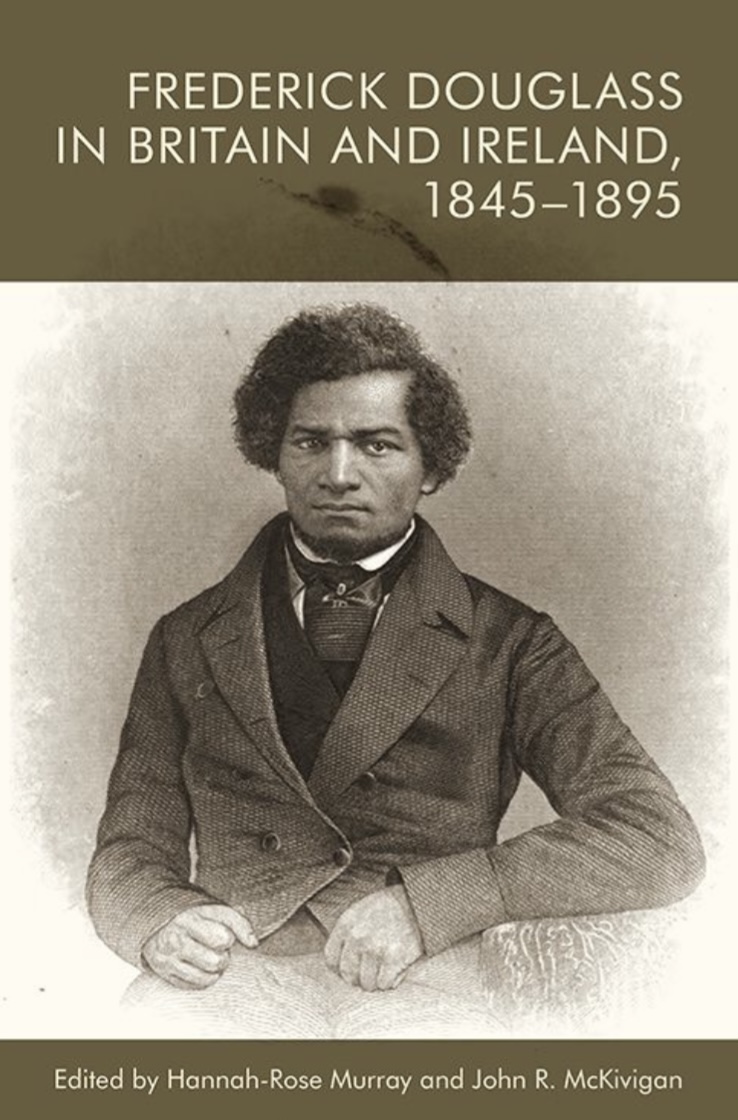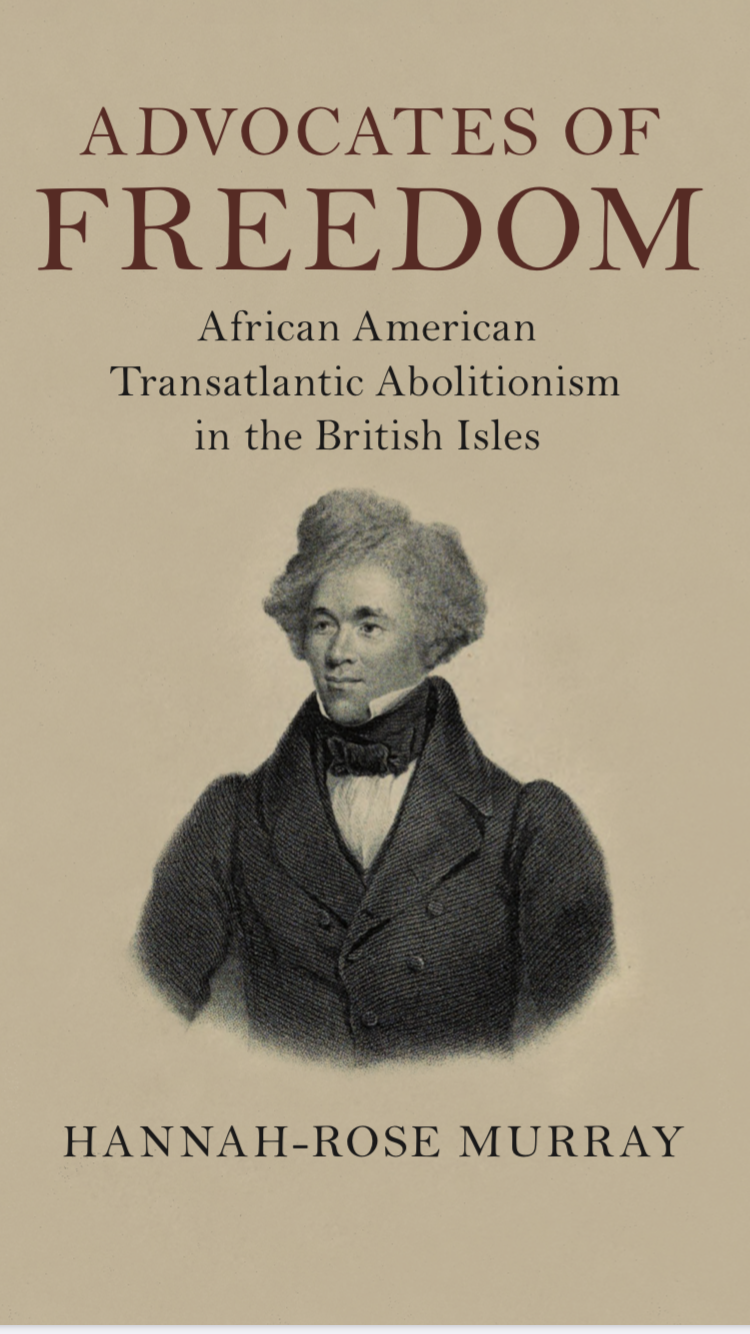New Book: Daguerreotyped On My Heart (TBC)
The focus of my next book is something I’m working on during my Early Career Leverhulme Research Fellowship at the University of Edinburgh. The project (and book’s) eventual title will be: Daguerreotyped on My Heart: Transatlantic African American Visual and Textual Resistance in the British Isles, and is inspired by Frederick Douglass, who gazed around at a London antislavery meeting in 1847 and proclaimed the scene was so affecting, it was “daguerreotyped on his heart.” This interdisciplinary project fills a major gap in the field by analyzing how formerly enslaved individuals used visual and textual cultures to challenge white supremacy. For example, I analyze Moses Roper’s interwoven relationship between his oratory and the sale of his printed narrative; Josiah Henson’s illustrated children’s edition of his slave narrative; the radical performances and paintings orchestrated and used by James C. Thompson, Turner Williams and Washington Duff in their antislavery meetings, and James Watkins’ use of oratory and poetry. I will create a new theorization regarding antislavery visual and textual cultures through my analysis of how Black freedom fighters used various forms of visual culture to educate transatlantic audiences, including photography, panoramas, woodcuts, whips and chains, drawings, lantern slides, maps, and illustrations in narratives, novels and children’s literature.
I’m really excited about this project and with the amazing books that are coming out in this field right now (Aston Gonzalez’s Visualizing Equality to name just one!) it seems timely. Most of all, I’m looking forward to introducing folks to activists that have been either sidelined or completely ignored by scholars, including James Watkins and James C. Thompson. Watkins wrote a narrative that went through multiple editions between 1852-1862, and sold tens of thousands of copies; he also wrote at least two editions of a poetry book and gave hundreds of lectures largely on the Wesleyan Methodist/Methodist circuits in Manchester, Yorkshire, Lancashire, and across the rest of England. Thompson was born into chattel slavery in Virginia and travelled to the UK in 1860: he lectured across the south of England and Wales, and exhibited panoramas and paintings of his own design. Some of these pictorial scenes included scenes of his own torture, lost family members and the cruelty he witnessed while enslaved.
I’m also excited to share the story of John Williams, who was born into chattel slavery in New Orleans and escaped to England c.1840. He wrote a narrative that has never been published before, which contains a terrifyingly visual account of his escape from alligators and the bloodhounds of his former enslaver. Similarly, I will be delving into the life of Dinah Browne, born into chattel slavery in Virginia who escaped to London in 1861.
Another part of this project focuses on activists that are more well-known to scholars - including Henry ‘Box’ Brown and his debut as an actor on the Margate stage (building on Martha Cutter’s excellent work) and William Craft, who began using magic lanterns, panoramas, models and maps in his lectures from the mid 1850s onward.
An Anthology (with John R. McKivigan): Frederick Douglass in Britain and Ireland 1845-1895
My new book co-authored with Prof. John R. McKivigan, Frederick Douglass in Britain and Ireland 1845-1895, is out now with Edinburgh University Press! You can purchase it here
 Front cover
Front cover
This is the first and only anthology dedicated to Douglass’s three journeys to Britain, covering oratory, print and visual culture. It provides a monograph-length introduction focusing on Douglass’ experiences in the British Isles, from his first visit in 1845, to 1859 and 1886 (the latter two visits have received scant attention from scholars in comparison to his first visit in 1845) and presents speeches, letters and poetry in relation to Douglass’ visit (including his own testimony) that have never been published before.
We examine how Douglass employed various media – letters, speeches, interviews and his autobiographies – to convince the transatlantic public not only that his works were worth reading and his voice worth hearing, but also that the fight against racism would continue after his death.
This is the culmination of nearly a decade worth of work and research, so it’s overwhelming to see it in print! Thanks to all those who made this edition possible, especially Prof. Celeste-Marie Bernier, to whom I dedicate the book to.
My First Monograph: Advocates of Freedom
My book, Advocates of Freedom, is out now! You can purchase it here
 Front cover
Front cover
I argue that by sharing their oratorical, visual, and literary testimony to transatlantic audiences, African American activists galvanised the antislavery movement and highlighted not only their death-defying escapes from bondage but also their desire to speak out against slavery and white supremacy on foreign soil. Using a framework I term adaptive resistance, I uncover the reasons why some activists were more successful than others, why they visited certain locations, how they adapted to the political and social climate, and what impact their activism had on British society. Broadly, adaptive resistance is a triad that rests on performance, antislavery networks and exploitation of print culture. For example, one of the reasons why Frederick Douglass was so successful in 1845 was due to his oratorical skill, his connections to William Lloyd Garrison’s antislavery movement and friends across Britain and Ireland, who in turn befriended newspaper editors and published pamphlets and materials to maximise support for Douglass and the abolitionist cause. Others, like Moses Roper, were maligned in the press by newspaper correspondents and by some abolitionists; he often had to make his own way around Britain without such concrete networks of support. Through excavating British newspaper articles, I analyze their performances, their testimony and how they were received by the press and public across the nineteenth century, and how certain events – like the publication of Harriet Beecher Stowe’s Uncle Tom’s Cabin and the American Civil War impacted their missions.
The politicized and radical journeys undertaken by African Americans to the British Isles are crucial to understanding their testimony and future careers, but also the antislavery movement and the Black Atlantic as a whole. For the first time, my book reveals new testimony and archival discoveries surrounding the stories of Moses Roper, Frederick Douglass and Josiah Henson (to name a few) and uses digital mapping to analyze their antislavery missions as well as a theoretical framework to determine why some activists were more successful than others. In this detailed study, I examine how in Britain and Ireland, thousands of slave narratives and abolitionist pamphlets were sold, petitions were signed, hundreds of pounds were raised for societies or given directly to help purchase individuals or their family members from slavery. Thousands more attended meetings at chapels, town halls, school rooms and lecturing halls, who often queued for hours beforehand and millions of words were written in response to Black activists and their stories of slavery. These activists challenged misconceptions of slavery, advanced the cause of abolition and mobilized public opinion. Through their interventions with the press, correspondents published Black abolitionist letters, speeches and commentaries, and their message was spread often beyond their immediate reach or where they had lectured. Their tireless activism often created and sustained antislavery momentum across the transatlantic, and their international missions inspired further action as well as apoplectic rage in the United States.
My work is also timely: as the Black Lives Matter protests continue to take place around the world, it’s important to recognize that the activists I discuss were declaring that their Black lives mattered nearly two centuries ago. It’s well documented that the movement has strong historical roots, but my chapter on Ida B. Wells’ lynching campaign in Britain in 1893 and 1894 is particularly prescient when we consider the modern lynchings of George Floyd and Breonna Taylor. The book highlights not only the trajectory between activists in the c19th and today, but also how far we still have to go to accomplish their anti-racist missions.